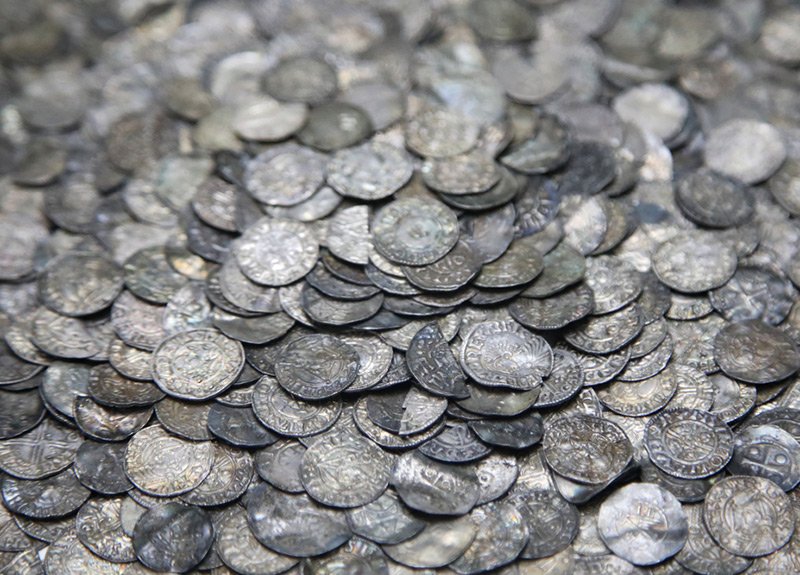
A recent announcement by Manx National Heritage, a heritage organization located in the area, claimed that an amateur treasure hunter discovered a Viking silver treasure on the island.
Dr Kristin Bornholdt-Collins, a US-based numismatic researcher, said the Viking silver treasure found was similar to today's cryptocurrency and could be compared to Satoshi Nakamoto's Bitcoin.
Viking Hack's silver treasure was modern equivalent to cryptocurrency
Recently, an amateur treasure hunter on the Isle of Man discovered a Viking silver treasure otherwise known as "hack" silver. Manx National Heritage revealed that the ancient coin included 87 silver coins and 13 pieces of silver bracelets, along with some other numismatic artifacts.
Kath Giles, a private landowner who was using a metal detector to find the Viking stash, discovered it in April.
Manx National Heritage announced that Viking coins had a "90%" silver content. The "mixed hoard" of coins that Giles found is called "a mixed pile of Viking-era silver coins."
A currency without borders or political affiliation
Experts believe the owners created mixed reserves of money which they planned to pay back the money at a later date. Bornholdt-Collins says the stash can be used as a "piggy bank" and could be considered a 1.000-year-old cryptocurrency analogue.
Bornholdt-Collins said the Northern Mixed Treasury was the fourth Viking Age coin collection discovered on the Isle of Man in the past fifty years. It may have been added over time, such as a piggy bank representing some older coins.
However, most of it is a reflection of what was circulating in and around Man at the end of 1020 / c. 1030.
Bornholdt-Collins claimed that in addition to coins, the treasures also contained a substantial portion of hack-silver and bullion. This would be weighed and tested for quality during transactions. This is a common feature in Viking Age artifacts, but it appears to be an unusual feature of Manx's treasures.
Since bullion could be used for international trade because it was convenient for all transaction sizes and was decentralized (a currency that has no borders or political affiliation), this may explain why.
According to the Manx National Heritage team, the coin dates back to 1035 AD. Researchers believe Viking silver was created over a period of time, perhaps as a short-term savings account. The Viking Gallery at the Manx Museum will exhibit Viking silver.
